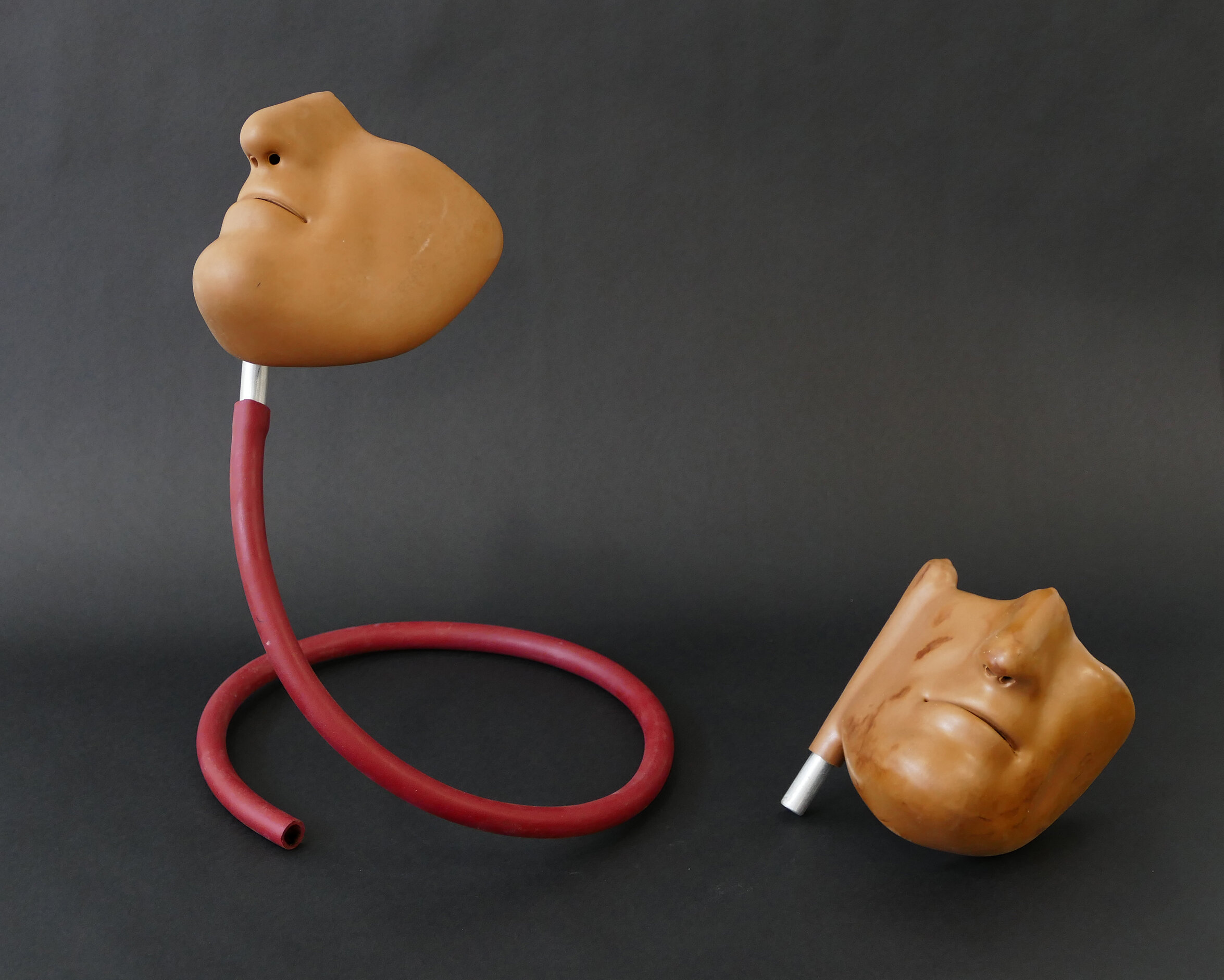1964 Cheshire-Wilson Resuscitation Trainer
1964 Cheshire-Wilson Resuscitation Trainer
One of the more eflicient forms of resuscitation is the mouth-to-mouth method whereby breathing in apparently drowned or electrocuted persons can be induced by a person breathing into the mouth or nose of the patient so as to create movement in the lungs of the patient in an endeavour to re-start breathing in the patient.
Due to the nature and form of this method of resuscitation it is diflicult and unpleasant to demonstrate, teach and train people in the method due to the necessity of having mouth-to-mouth contact between an instructor or pupil and a simulated patient and also the fact that the method of resuscitation cannot be effectively carried out on a person who is breathing normally and whose breathing is not impaired.
It is an object of this invention to provide an apparatus which can be used by an instructor or pupil and a simulated patient whereby the method of mouth-tomouth or mouth-to-nose resuscitation can be demonstrated and taught, and persons trained how to perform the method of resuscitation without actual mouth-tomouth or mouth-to-nose contact between the instructor or pupil applying resuscitation and the patient, and at the same time the apparatus is visible to the users thereof so as to demonstrate visually the effects of the resuscitation.
According to this invention the apparatus for demonstrating, training and teaching resuscitation and lifesaving techniques comprises a mask having a slit or cut portion representing a mouth and an aperture or apertures representing a nose or nasal passage, the mask being adapted for attachment to the face of a simulated patient, A11 inflatable member representing lungs and adapted for attachment to the chest of a simulated patient, is provided as well as a connection between the mask and the inflatable member, such connection being a passage or passages or common chamber providing communication between the mask and the inflatable member. The arrangement is such that in applying resuscitation on the simulated patient a person can apply his mouth to the representative mouth or nose of the mask and in so doing can also cover or close the representative mouth or nose of the mask not being used. Upon breathing into the mask his breath is transmitted by way of the passage or passages" or common chamber into the inflatable member which inflates so that a person practising resuscitation can observe the eifect of breathing into the mouth and/ or nose of the mask attached to the simulated patien and can learn to carry out the method of mouth-to-mouth or mouth-to-nose resuscitation.
Comes with original bag / artificial lung / and two masks with hose.







